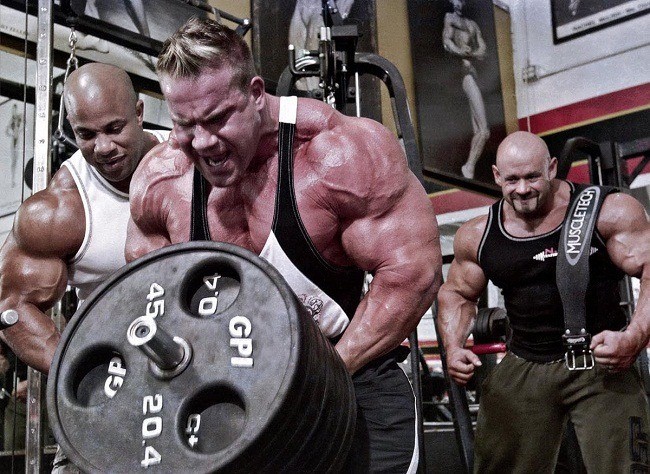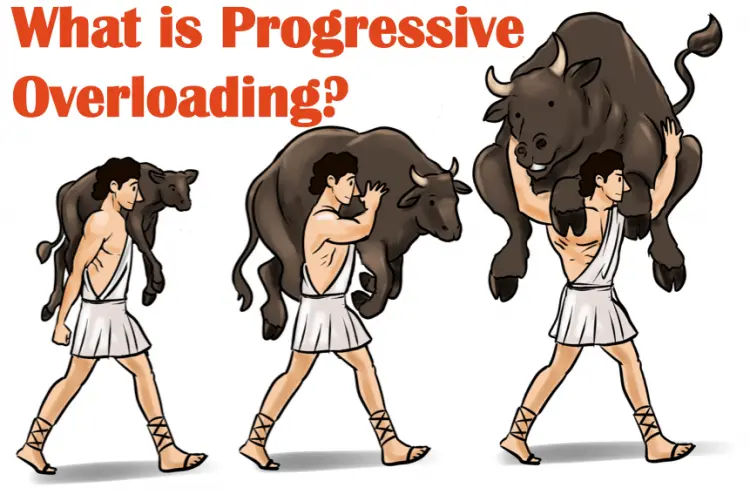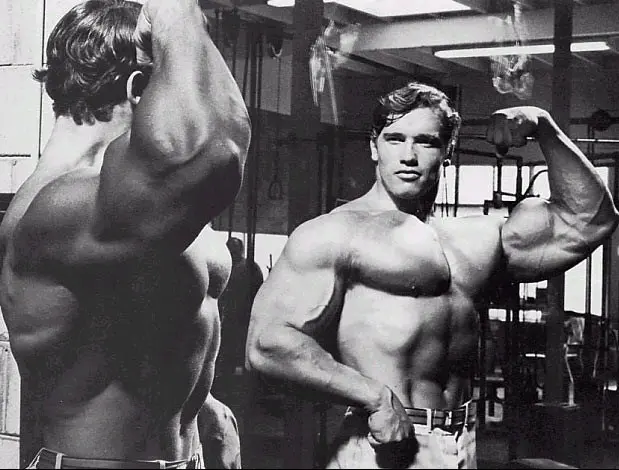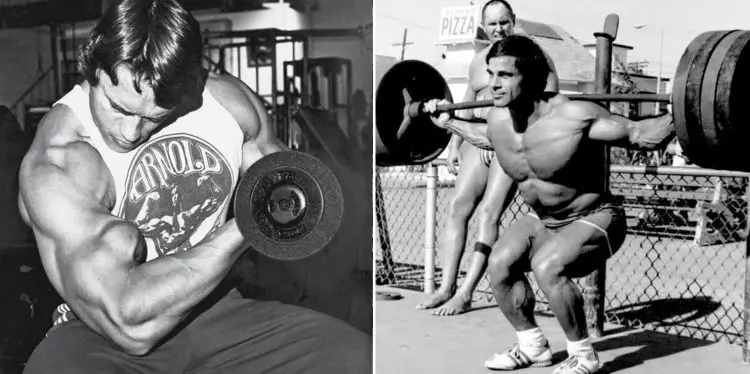A journey is almost always easier when you’ve got a map. You know where you are starting from and what your destination is. Following a map means you are less likely to get lost and will arrive at your goal sooner.
You COULD go on your journey without a map, and you may even reach your destination, but your chances of success are much lower, and you will probably waste a whole lot of time and energy in the process. You might even get lost and never find your way home!
The same is true for bodybuilding training.

A lot of lifters go into the gym with no idea of what they are going to do that day, other than what muscle group they’re going to train. They make up their workout as they go, paying very little attention to weights, sets, reps, or rest periods. They leave the gym feeling tired and pumped and yet make very little progress toward their ultimate training goal.
That all changes when you follow a well-designed bodybuilding program.
Level Up Your Fitness: Join our 💪 strong community in Fitness Volt Newsletter. Get daily inspiration, expert-backed workouts, nutrition tips, the latest in strength sports, and the support you need to reach your goals. Subscribe for free!
While you can get great results by following a pre-written workout, such programs are aimed at entire groups and not individuals. As such, no off-the-peg program will ever match your needs perfectly. That’s why learning to design your own workouts is such a useful skill.
In this guide, we explain how to construct your own bodybuilding program so that you can reach your training goals quicker and more easily. Just follow these steps…
1. Pick Your Split
When it comes to bodybuilding training, full-body workouts will only take you so far. A full-body workout means you’ll only really have time for one exercise per muscle group, and such a low-volume approach may not be ideal for triggering hypertrophy once you move beyond beginner status.
A split routine involves training different muscle groups on different days. With more time to dedicate to individual body parts, you can do more exercises and sets, so you get better results from your workouts.
There are lots of split routines you can use, involving a range of training days per week. For example:
- Push/pull/legs (three or six training days per week)
- Upper/lower/upper/lower (four training days per week)
- Body part splits (five training days per week)
With so many splits available, you need to choose the one that you know you can stick to. There is no point picking a six-day-per-week workout split if you can only reliably hit the gym four times. After all, missing workouts will unbalance your entire training week.
If you decide to create your own workout split, take care not to train similar muscle groups on consecutive days. For example, if you trained chest on Monday and shoulders on Tuesday, you’ll end up doing similar exercises two days in a row. That’s why the push/pull/legs split is so popular; it automatically prevents these unwanted overlaps.
So, choose a split that you know you’ll be able to maintain. Not just for a week or a month, but for your next training cycle of several months.
Check out our in-depth guide to the 12 Best Workout Splits here!
2. Choose Your Exercises
Once you’ve picked your split, it’s time to start filling it with exercises. Your choice of exercises depends on several factors, including what equipment you have available, your weaknesses and strengths, and your personal preferences.
As a general rule, you should do 2-4 exercises per muscle group. Exercises will be either primary or secondary. Primary exercises are the movements that provide you with the biggest bang for your buck, while secondary exercises are less important but still useful.
For example:
- Bench press (primary)
- Incline dumbbell press (primary)
- Cable crossovers (secondary)
Avoid choosing lots of very similar movements, e.g., seated leg curl, standing leg curl, and lying leg curl. Instead, select compound and isolation exercises to work your muscles from a variety of angles and using slightly different movement patterns.
Choose exercises that address your weaknesses. For example, if your back is wide, but lacks density and thickness, you should start your back workout with something like heavy Pendlay rows.
Check out this article and learn the best exercises for each muscle group.
Once you’ve selected your exercises, organize them so that you do the hardest/highest skill exercise first and the easiest/less complicated exercises last. This will ensure that you can put the most effort into the exercises that produce the best results.
3. Pick Your Sets and Reps
While there is nothing to stop you from doing three sets of ten for all the exercises in your bodybuilding program, that is not the best way to make progress. Instead, you should use the entire hypertrophy rep range to maximize your gains.
The accepted rep range for hypertrophy training is 6-12 reps using 67-85% of your one-repetition maximum. However, you don’t NEED to know your 1RM, so long as you reach muscular failure within the chosen rep range.
Because you’re using 2-4 exercises per muscle group, you should apply a different rep range to each exercise. This will provide you with more variety, and variety is good for building muscle.
For example:
Level Up Your Fitness: Join our 💪 strong community in Fitness Volt Newsletter. Get daily inspiration, expert-backed workouts, nutrition tips, the latest in strength sports, and the support you need to reach your goals. Subscribe for free!
- Bench press 4 sets of 4-6 reps
- Incline dumbbell press 3 sets of 8-10 reps
- Cable crossovers 3 sets of 12-15 reps
In general, primary exercises are best done with heavier weights and lower reps, while secondary exercises work best with moderate to light weights and medium to high reps. This provides a good balance between building strength and then chasing a pump.
Such an approach will trigger all the mechanisms necessary for successful muscle growth, namely muscle tension, metabolic stress, and training volume.
How many sets should you do? Anywhere between 1-5 per exercise, with three being the average.
Adjust your training volume so that it fits into your workout, and don’t fall into the trap of thinking more is better. The first set or so is responsible for the majority of your progress, and doing more than necessary could be a waste of time and could even mean you take longer to recover between workouts.
Try to determine the lowest number of sets you need to make progress and not the highest number you can tolerate.
4. Choose the Right Rest Periods
A lot of lifters time their rest periods by how long they spend chatting at the water cooler. Big mistake! How long you rest between sets plays an important part in the effectiveness of your workouts.
If you rest too long, your muscles will be too recovered, and that will rob your workout of the intensity needed for optimal muscle growth. Rest too little, and you’ll be too tired to do the optimal number of reps or lift as much weight.
In general, the heavier the weight and the lower the reps per set, the longer you need to rest between sets. That’s because heavy weight/low rep sets are neurologically demanding, and your nervous system takes longer to recover than your muscles and their energy systems.
In contrast, things like lactic acid and the other fatiguing waste products produced during lower weight/higher rep training clear faster, so you should be ready for your next set sooner.
Use the following to determine how long to rest between sets, remembering that you’ll need to use different rest periods for different exercises.
- Low reps/heavy weights (e.g. 5 reps) : 2-5 minutes
- Medium weights/moderate reps (e.g. 8 reps) : 1-2 minutes
- Light weights/high reps (e.g. 12 reps) : 20-60 seconds
If you are not recovered enough, use the upper end of these scales. If you recover quickly, use the lower end of the scales. You may also need to adjust your rest periods during your workouts, as fatigue starts to set in. However, you should not rest so long that you are fully recovered or begin to get cold as that will make your workout less productive.
5. Bolt-on A Training System
If you are an experienced lifter, straight sets, such as four sets of eight, may not provide the intensity you need to get bigger and stronger. Rather than do more sets or exercises, you can use training systems to increase the intensity of your workout.
Training systems allow you to train past the point of momentary muscular failure, where you cannot do any more reps unaided. This extra intensity could be just what you need to maintain your progress.
Examples of hypertrophy-specific training systems include:
You can read about these and other training systems in this detailed guide.
6. Make Your Workout Progressive

Having followed these steps, you should now be the proud owner of a well-written bodybuilding program. However, while your workout should produce good results initially, your progress will soon stop if you don’t make your program progressive.
That means your workout needs to increase in difficulty week by week.
Ways to do this include:
- Increasing the weight
- Increasing the reps
- Decreasing the rest periods between sets
- Doing more sets
However you do it, these increases will ensure next week’s workout is slightly more intense than last weeks, and that will keep those gains coming. If your workouts aren’t progressive, you’ll soon stall.
Read also: Muscle Development With Progressive Overload.
7. Review Your Results

Now that your program is written, it’s time to check it. Take a moment to confirm that it will fit into the amount of time you’ve got for training. You should be able to complete around 20-25 sets in one hour, and you also need to factor in exercise transitions and warm-ups. If your workout is too long, prune a few sets or exercises from it so it’ll fit your schedule.
Once you’ve completed this review, it’s time to put your program into practice. Do the entire week, making changes as necessary. In some cases, what looks good on paper doesn’t work so well in the gym, so make a note of what works and what doesn’t. Make adjustments accordingly.
By the time you reach the start of your next training week, your program should be polished, fine-tuned, and ready to go. Stick with it for the next 4-8 weeks, making a note of your progress.
At the end of this period, called a training cycle, either make some changes to your workout or start over and write a new one. This will help keep you out of any possible training ruts.
Bodybuilding Program – Wrapping Up
While you COULD hire a coach to write a workout for you or follow an off-the-peg workout, you’ll probably get better results if you take matters into your own hands and learn to write training plans for yourself.
Writing your first bodybuilding program can be a daunting prospect. Faced with a sheet of blank paper or an empty spreadsheet, it can be hard to know where to begin. The good news is that while that first program may be a struggle, writing bodybuilding workouts gets easier with practice.
Once you’ve written a few, you’ll soon become a programming pro, and what once took you hours will take minutes instead. Just follow these steps, and you’ll be on your way to writing effective bodybuilding programs.













